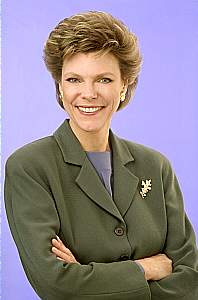Capital Dames is based on extensive research and documentation of collections of private letters of the era, newspaper accounts, histories, memoirs, and official government documents. Capital Dames is a story, told in short vignettes, of high society women in Washington, DC before, during, and after the war. It includes descriptions of long held friendships between prominent women of the Union and the Confederacy and the political machinations that the women became involved in.
The most featured women in Capital Dames are: Mary Lincoln, wife of Abraham Lincoln, whose Southern family made her suspect to Washington society, Elizabeth Keckley, a former slave seamstress and confidant to President and Mrs. Lincoln, Varina Davis wife of President Jefferson Davis, whose Northern family made her suspect to the first families of Virginia in Richmond, Kate Chase Sprague daughter of Salmon Chase, Secretary of Treasury and later Chief Justice of the US Supreme Court, Rose Greenhow the famous Confederate spy, Mary Anna Curtis wife of Robert E. Lee (and daughter of George Washington’s step son), Elizabeth “Lizzie” Blair Lee, sister of Montgomery Blair, daughter of Preston Blair of Maryland, and wife of Admiral Samuel Phillips Lee, Julia Dent Grant, wife of General Grant, Virginia Clay wife of Clement Clay, who was a former Confederate agent in Canada suspected in the plot to kill Lincoln and who was arrested with Jefferson Davis, Eliza Johnson wife of President Johnson, and Jessie Benton Frémont wife of General John Frémont. The activities of Clara Barton are also recounted given her great influence with General Grant for establishing battlefield and other hospitals for wounded and sick Union soldiers. In addition to Clara Barton, the battlefield contributions of Dorothea L. Dix, the superintendent of nurses, are recounted for which she was honored by Secretary Stanton and General Sherman.
Two stories struck me as most interesting. One occurred after the war, Varina Davis and Virginia Clay traveled to Washington at different times to meet with President Andrew Johnson to appeal for their husband’s release from imprisonment at Fort Monroe, Virginia. Both men were held on suspicion of involvement in the assassination of Lincoln but no evidence was presented, no charges were made, and no trial was held. Both President Johnson and Edwin Stanton, the Secretary of War were not sympathetic.
Mrs. Clay also met with General US Grant and his wife, Julia, who were very sympathetic to her cause and in fact Grant advocated emptying the prisons as an act of good will. He dictated a letter to President Johnson asking that Clement be paroled or given amnesty. Eleven months later Clement was released.
Later, when Mrs. Davis showed up in Washington distressed at reports of her husband’s treatment, confinement, and ill health at Fort Monroe, Virginia, it created quite a sensation. Her old friends and General Grant offered to help. She got an audience with President Johnson who said he was limited by public opinion. Soon the general in charge of the fort was transferred resulting in better care of Davis. Her efforts through the media of the day especially Horace Greeley, editor of the New York Tribune, resulted in her husband’s release two years and a day after his capture.
Secondly, during the war the federal government tripled in size from about 5,000 clerks to over 15,000 forever changing the city. Also the city grew with the steady arrival of thousands of “contrabands” which was the term for slaves who had escaped slavery. The abolitionists were very passionate regarding ending slavery either by escape and the underground railroad, confiscation by Union Forces, by the Emancipation Proclamation and ultimately through ratification of the 13th Amendment to the US Constitution, but no one offered a plan for what was to happen to the former slaves. No one was prepared to answer the “what then” question.
In Washington two schools of thought emerged as to how to deal with the refugee/contraband crisis. One group favored government funded relief for the former slaves to include food, shelter and menial jobs making them more or less permanently dependent on the government. Of course, Congress never provided enough funds to do the job. Another group favored education and training, temporary housing, food and jobs leading to eventual self sufficiency. This issue seems to remain with us over 150 years later!!
Capital Dames is rich in human drama details, colorful short stories and is an easy, interesting read.
 |
|
|
Cokie Roberts,
is an ABC/PBS TV News reporter/commentator who hails from an prominent Louisiana political family. Her father was Thomas Hale Boggs, a New Orleans, Louisiana Democrat Congressman and House Majority Leader who was killed on October 16, 1972 in a plane crash in Alaska.
Capital Dames is one of a series of her well written books about influential woman in the history of the United States to include: Founding Mothers-The Women Who Raised Our Nation and Ladies of Liberty-The Women Who Shaped Our Nation (Abigail Adams, Dolley Madison, Rebecca Gratz, Louise Livingston, Sacagawea, and others).
|
|

